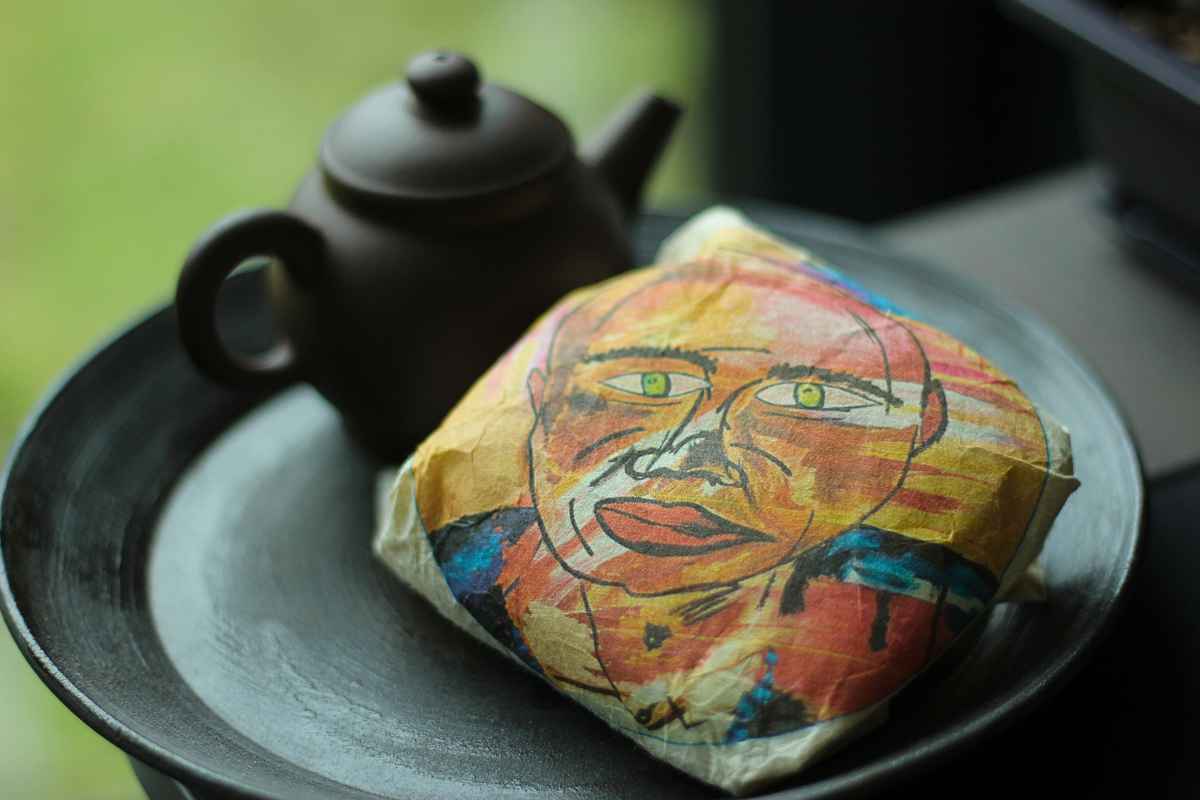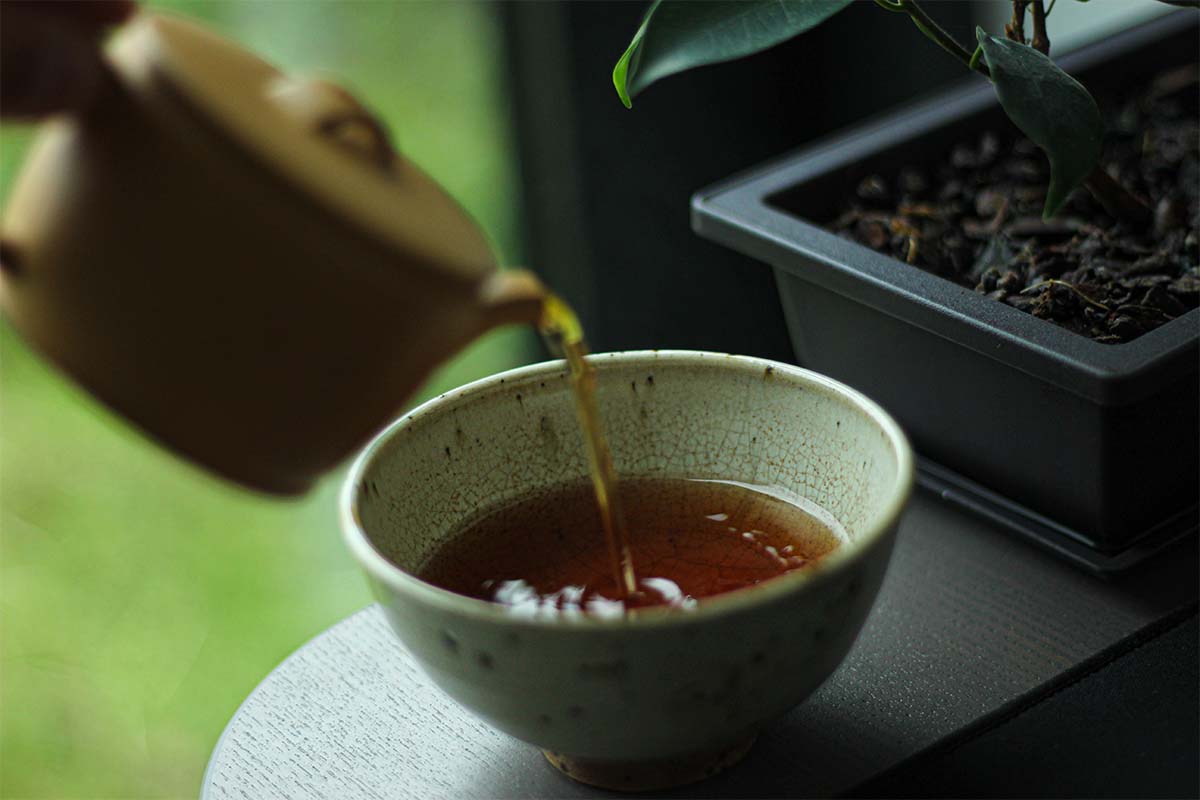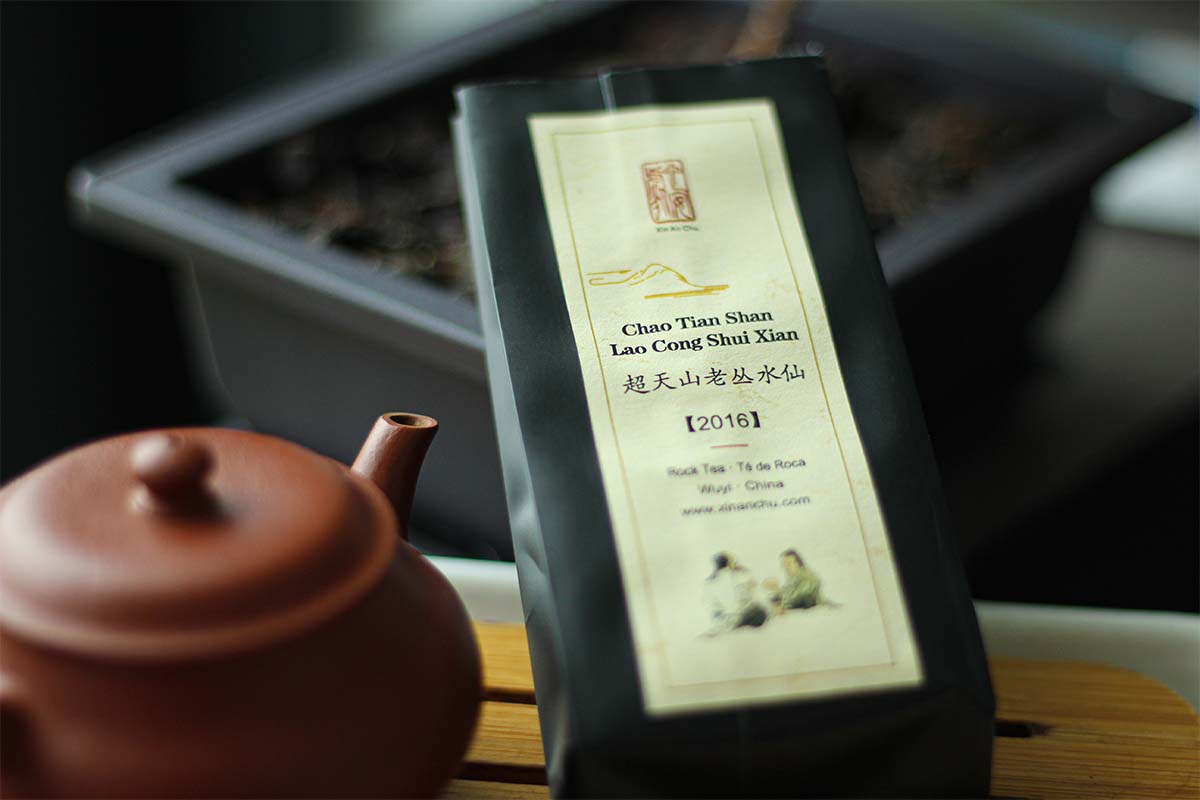One of the good things about tea is that you can enjoy it on your own but you can also drink it with someone to share ideas about what you’re drinking. That is what I did yesterday by meeting a friend (The Tea Engineer on Instagram) and having an extended tea session of several aged tie guan yin oolong teas. The teas are part of the Master Zhang collection over at Verdant Tea.
Have you considered subscribing to Tea Adventures? You can enter your email address in the sidebar and get updates whenever I publish a new article. You never have to miss an article again by joining our mailing list.
Tie Guan Yin
These particular tie guan yin teas are sold by Verdant Tea as part of Master Zhang’s collection. All of the teas we tasted during yesterday’s session come from the fields above Daping in Anxi at an altitude around 1000m. In these fields, wild flowers are growing to attract insects so they won’t target the tea plants and to infuse the growing plants with their complex aroma.
Tea Session
In total, we tasted 6 tie guan yin teas of various ages. We started with two tie guan yin teas from 1985. The first one was a special grade Qing Xian tie guan yin and the other one was a normal grade from 1985. The difference between these two teas was that the special grade was unroasted and that it received minimal ‘qing xiang’ processing, allowing age to bring out the flavours. The second tea from 1985 went through a subtle and slow roast. The other ones were teas from 1990, 1995, 2000 and 2005. Master Zhang processed these in similar ways and roasted them every year to age them properly. For this session, we used 90°C water, 3-5g of tea for a 100ml Yixing teapot and we did infusions of 25 – 30 – 35/40 seconds.
1985 Special Grade Qing Xiang Aged Tieguanyin
We started with the oldest one because we wanted to fully experience it. It had a rather sweet aroma that was earthy at first and became a bit peppery later on. The flavour was mainly peppery with some mineral notes to it and a light sweetness in between. Nothing too dominant as this was a really subtle one.
1985 Aged Tieguanyin
This was the roasted version of the 1985 version and that was noticeable in the flavours. The aroma wasn’t that different but we felt that it was sweeter than the previous one. The difference between this one and the unroasted one was definitely there. Of all the flavours we got, the sweetness was the most dominant one.
1990 Aged Tieguanyin
The aroma of the dry leaves here was different. I mainly got a very dark kind of chocolate while smelling the leaves. The flavours were also different as this one was less sweet and a bit sharper/edgier. It was still sweet but not as sweet as the previous one. Interesting to know is that this one had the darkest liquor of them all.
Don’t know where to buy tea online in Europe? I made a list of over 80 online shops and I keep updating it regularly. You can check it over here.
1995 Aged Tieguanyin
This one was really different from the first three. The aroma is a lot sweeter and it gives the impression of being creamy. The flavour is definitely sweeter without pepperiness and spiciness. This is the best one up until now. The flavours are more intense and they go deep into the aftertaste.
2000 Aged Tieguanyin
The aroma of this one was warm with a sharp edge. It wasn’t a spicy kind of edge, but more of a fruity freshness. This one was a lot more fruity than the previous ones. It resembled an apple/pear jam with cinnamon. Still sweet but the fruity notes were dominant.
2005 Aged Tieguanyin
The aroma of this one is even sharper and fresher than the previous one. It’s still fruity but it has a sharp edge to it. The flavours didn’t change much but they are more subtle than the 2000 one.
Conclusion
This was a really interesting session. We drank a lot (and I really mean a lot) of tea but it was necessary to compare what ageing does and has done to tea leaves. We started the session with the oldest ones and those were the most subtle. The flavours we got from the first three (1985 special grade, 1985 and 1990) were more or less the same. They all had notes of minerality, pepperiness and sweetness. The big difference was that the first and third ones were mainly peppery, while the second one was the sweetest. The flavours were there in all three but the ‘ratio’ was different. The fourth tie guan yin was, in our opinion, the best one. It had a lingering sweetness that was noticeable long into the aftertaste. The fifth and sixth were more fruity with a bite. Still good, but not as sweet as the 1995 one.
In general, this was an interesting and insightful session. Before yesterday, I had never drunk an oolong tea this old so I’m quite happy I got to experience it. We both agreed that the 1995 tie guan yin was the clear winner. It seems as if this one has the right age to drink now.
If you’re interested in one of these teas, click one of the following links:




